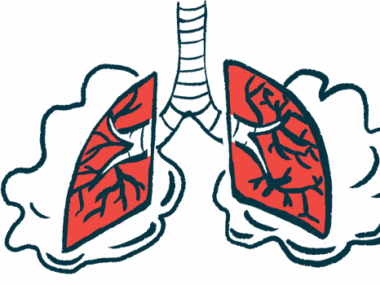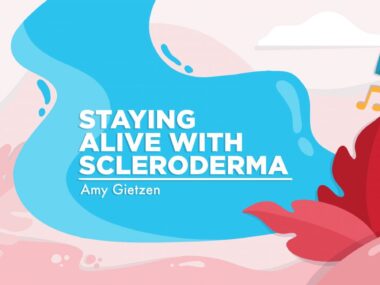Large study IDs risks for primary heart involvement in scleroderma
Researchers say results could help guide diagnostic efforts, treatment
Written by |

Wasting of the skeletal muscle, older age, being male, and having swollen joints are among the risk factors for primary heart involvement associated with systemic sclerosis (SSc), according to a study using a worldwide database.
Particularly, intestinal symptoms, widened blood vessels underneath the skin, called telangiectasia, and older age were linked with a greater risk of a new onset of SSc-primary heart involvement (SSc-pHI), while swollen joints increase the risk for heart disease progression.
“Our results could help to stratify patients with SSc according to the risk of development or progression of SSc‐pHI to guide diagnostic efforts and treatment initiation,” the study’s researchers wrote. The study, “Evaluation of Systemic Sclerosis Primary Heart Involvement and Chronic Heart Failure in the European Scleroderma Trials and Research Cohort,” was published in the Journal of the American Heart Association.
In systemic sclerosis, or scleroderma, inflammation and scar tissue accumulation (fibrosis) occur in the skin and internal organs, including the heart and lungs. Primary heart involvement, when cardiac abnormalities are predominantly attributed to SSc, is one of the leading causes of death in SSc.
It isn’t possible to “predict whether individual patients will develop clinically relevant SSc-pHI, whether it will be progressive, and how it may respond to immunomodulatory or antifibrotic therapies,” wrote an international team of researchers who analyzed data from the EUSTAR (European Scleroderma Trials and Research) database to learn more about risk factors and outcomes in SSc-pHI. A total of 5,741 patients were included in the analysis.
Risk factors for SSc‐pHI
Among 3,276 patients with available data, 1,531 had SSc-pHI. Most of those with SSc-pHI (66.8%) had left ventricle diastolic dysfunction, when the left ventricle is unable to fill properly, while 5.4% had left ventricle systolic dysfunction, when the heart is unable to contract normally. The left ventricle is the heart chamber that pumps oxygen-rich blood out to the body.
Also, 39.1% of patients with SSc-pHI had conduction defects, or problems associated with electrical impulses that control the heart’s rhythm, while 18.2% had irregular heartbeats. Perimyocarditis, or inflammation in the heart muscle and the sac that surrounds the heart, was present in roughly a quarter (27.8%).
The risk of SSc-pHI doubled in people with wasting of skeletal muscle, which controls voluntary movement. Older age, being male, having swollen joints, skeletal muscle weakness, and tendon friction rubs likewise increased the risk of SSc-pHI.
Evaluating new onset risk factors
The researchers then evaluated the risk for new onset SSc-pHI in 1,000 SSc patients, 118 who developed the condition and 882 who didn’t. Those with telangiectasia had more than twice the risk of developing pHI, while intestinal symptoms increased it by 70%. Older age was again a risk factor, as was having anti-topoisomerase I antibodies, a type of self-targeting antibodies associated with SSc.
Among the 1,531 SSc-pHI patients, 414 had disease progression. In most (70.8%), SSc-pHI progression corresponded to a decrease of at least 5% in left ventricle ejection fraction, which is the proportion of blood in the left ventricle that gets pumped out to the body with each heartbeat.
Additionally, 26.8% of the patients had a new onset of arrhythmia or conduction disorder. Overall the presence of swollen joints increased the risk for SSc-pHI progression by almost 2.5 times.
A survival analysis completed on 3,768 patients, 2,554 with SSc-pHI, showed that having pHI was associated with a higher mortality risk. Particularly, the 10-year survival rate among people with SSc-pHI was significantly lower than those without it (72.5% vs. 94.9%).
the highest mortality rate was seen in patients with both SSc‐pHI and SSc‐interstitial lung disease (ILD), but the patints with SSc‐pHI and without ILD had a lower survival rate than those with ILD and without SSc‐pHI. ILD refers to lung conditions marked by inflammation and fibrosis of the tissue in and around the lungs’ air sacs.
About a third of the group with SSc-pHI had heart failure with preserved ejection fraction (HFpEF), when the heart’s left ventricle can still pump blood out to the body at a normal rate, but it can’t fill up properly with blood between heartbeats. Tendon friction rubs increased the risk for HFpEF in those with SSc-pHI by 21%, while digital ulcers decreased the risk by 39%. The survival rate was similar between patients with or without HFpEF.
“In summary, we identified clinical and demographic risk factors for new onset of SSc‐pHI in the largest, multinational cohort with SSc and showed that patients with SSc‐pHI, even if asymptomatic, have a lower survival rate,” the investigators wrote.






